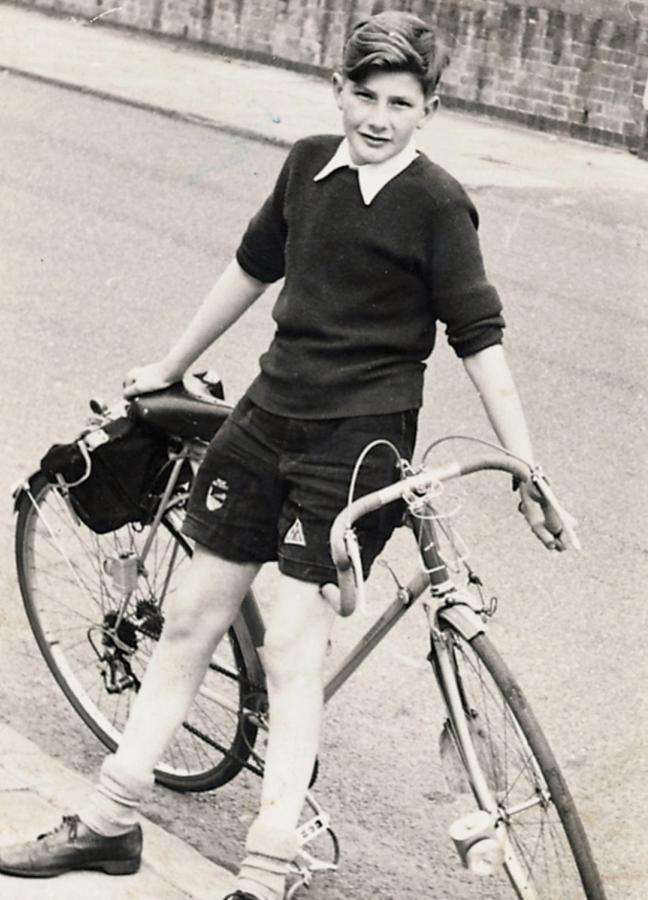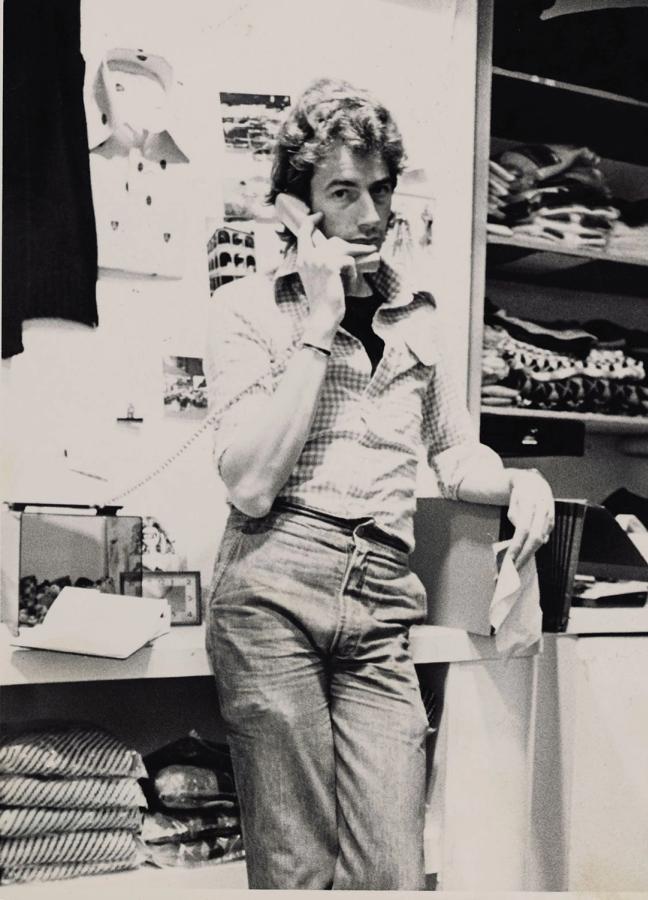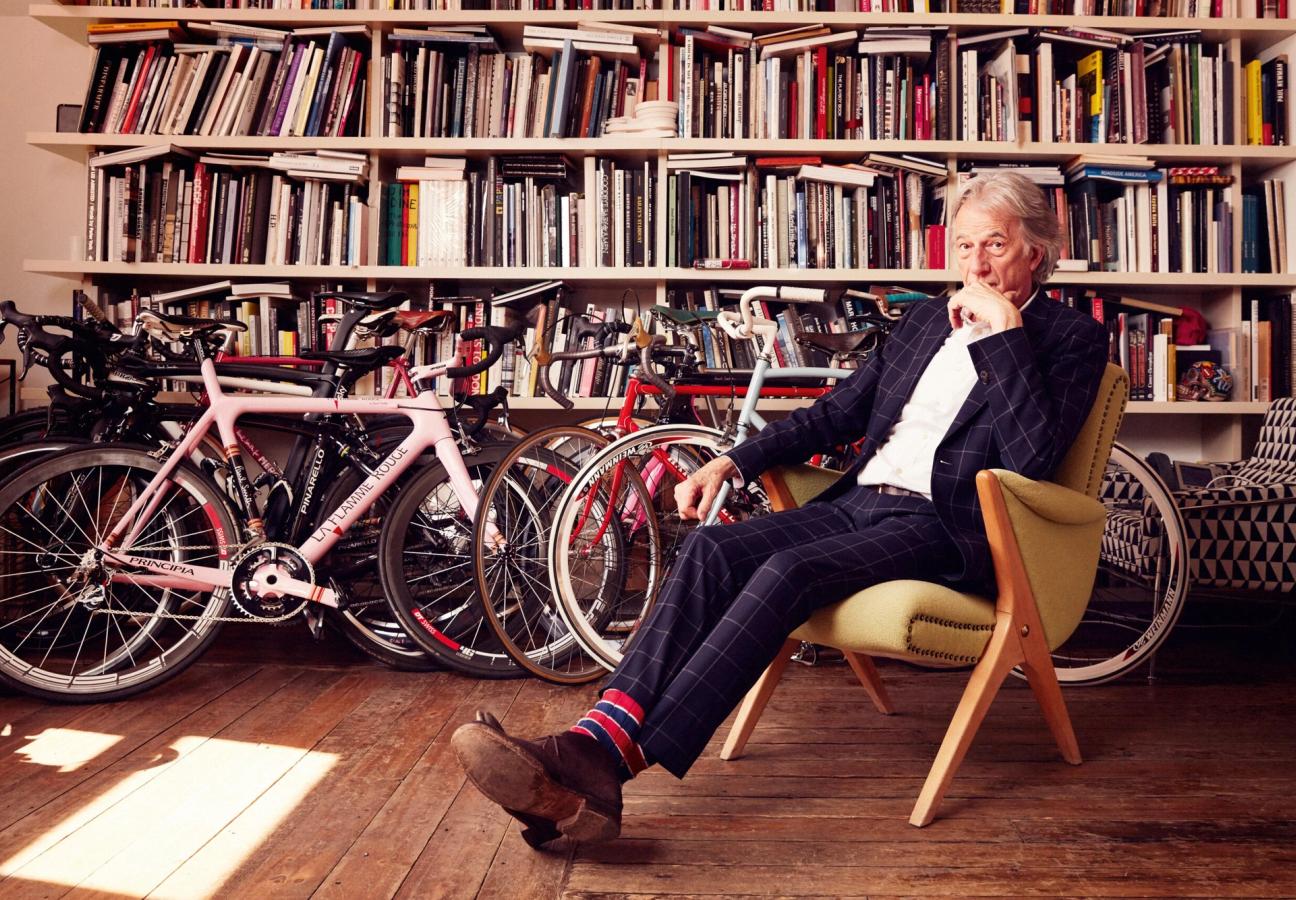

Words: Gentleman's Journal
We’ve all seen the stripes, and think we know the story – but how did Paul Smith really rise through the ranks of British fashion, to become one of our most prolific designers and biggest personalities in the world of style?
When Gentleman’s Journal interviewed the designer, Smith told us that he loves to be surrounded by unusual things, and never goes down the obvious route. And, while this can be said of his current design process, it can also be applied to his wider life. For Smith, a working class boy from Nottinghamshire, didn’t take the obvious route to success. In fact, he trod his own path entirely.

Born in 1946 in Beeston, Smith’s father was a draper and amateur photographer – influencing his son’s later work and informing his career choice from an early age. But, despite leaving his state school at 15 to work in a clothing warehouse, the designer-to-be initially had his heart set on becoming a professional racing cyclist.
This desire took a back seat to his day job, where he stayed for two years – cycling back and forth to work – until, at age 17, Smith was involved in a serious road accident. Six months of recovery in hospital followed but the injuries sustained still laid waste to his professional racing ambitions.
But, as they say, there is always a silver lining – and Smith’s came in the form of fashion. During his recuperation, the 17-year-old was introduced to students at a local college who would present him with his first taste of art, fashion and the thrill that comes with design.
Returning to work in the warehouse, where he was primarily employed as an errand boy, Smith began putting his new interest to use making displays for the showroom. His flair and enthusiasm for the role got him noticed and before long he was promoted to menswear buyer.
It was around this time that the future designer began taking evening classes in tailoring in Nottingham – a move that would set him firmly on the road to future success. And, even though progress was slow – learning to cut cloth and honing the meticulous craft of suit-making – once more Smith’s dedication and application to his work paid dividends. For, in his early twenties, the young Smith was spotted by Harold Tillman, head tailor of Savile Row’s Lincroft Kilgour, and offered a job.
Smith’s designs were worn by the great and the good of society elite – including George Best – and this boost in confidence, not to mention contacts, gave the designer the push he needed to make the next big leap in his business journey: opening his own shop.

In 1970, Smith and his then-girlfriend Pauline Denyer, a graduate of the Royal College of Art, pooled their savings to move back to Nottingham and open his first shop. Named Paul Smith Vêtements pour Hommes, this French flavour would come to prophesy the designer’s later success on the continent.
Half a decade later, Smith showed his first menswear collection in Paris. Proving a hit, this spurred Smith to become the first designer to open a store on Covent Garden’s prestigious Floral Street, where he sold an eclectic mix of modern tailoring, bold clothing and colourful accessories for men.
Credited – alongside Giorgio Armani – with revolutionising modern suiting, making cuts more relaxed and less stiff, Smith also had a hand in the renaissance of another, smaller and more personal piece of clothing: the humble boxer short. Now prevalent in underwear drawers up and down the nation, you have Smith to thank for these comfortable underpants being our drawers of choice.

Image by Tom Cockram
Over the years that followed, Smith’s quirky take on traditional menswear took his brand from strength to strength. Curiously, he found that he had both a cult following in Japan – which remains the brand’s strongest international market – and that 15 per cent of his customers were female. Never one to miss a business opportunity, in 1993 Smith debut his first womenswear line, an advancement followed swiftly by the acquisition of defunct workwear brand R. Newbold – whose famous cuts are still referenced in Paul Smith collections to this day.
It was around this time that the establishment began to recognise Smith, and his contributions to the annals of British design. Having already been given the Queen’s Award for Industry, in 1995 the Design Museum opened True Brit – the first exhibition dedicated to Paul Smith – and, in 1998 he was inducted into the New Labour Creative Industries Task Force. Inevitably it wasn’t long before Smith received a well-earned knighthood.
This honour was bestowed upon Smith in 2000, when he became the first tailor or designer to be knighted since Hardy Amies more than a decade earlier. The same day, Smith married Pauline Denyer, who had remained by his side for over 30 years.
Over the years, Smith hasn’t shied away from collaboration, instead believing that working together with other great companies only strengthens his brand. In 2002, he worked with the FA and Umbro. In 2007, he partnered with cycling brand Rapha, dressing Bradley Wiggins and Chris Hoy. He provided suits for Manchester United in 2009, and collaborated with lamp manufacturer Anglepoise in 2014. Recently, he has designed a bespoke Land Rover Defender, worked with Triumph motorcycles, created a limited edition copy of John Le Carré’s novel, Tinker, Tailor, Soldier, Spy, and designed not one but two limited edition cameras for Leica.
Smith never lets up, or gives up. He has spoken publicly about how he struggles to take time off, instead preferring to keep at work constantly – but in a relaxed manner. In 2010, the designer summed up his approach to business, success and the pursuit of a happy life: “My top tip is to take it slow. Life is a joy. You don’t have to be rich and famous straight away. Take it easy, grow gently and you’ll have a lovely life.”
This balanced approach to work has resulted in continued success over the last decade. In 2012, Hello, My Name Is Paul Smith opened at the London Design Museum and was so successful it promptly went on a world tour. But, even as this retrospective looked into his history, Smith was looking to future, launching his innovative A Suit To Travel In in 2015 and showing his first co-ed fashion show at Paris Mens Fashion Week in 2017.

Which brings us to today and the 50th anniversary of the Paul Smith brand. Now counting 48 stores, 118 franchise shops and more than 2,000 points of distribution, Paul Smith is a truly global fashion powerhouse; an achievement once again recognised by the establishment when Smith was made a Companion of Honour on the Queen’s 2020 Birthday Honours List – one of the highest honours that can be bestowed upon an individual.
Of course, Smith isn’t one to wait for others to celebrate him and, accordingly, 2020 has seen a number of commemorative releases – even among the chaos of the coronavirus pandemic. First the release of an eponymous coffee table book with Phaidon. Edited by Tony Chambers, with a foreword by Jonathan Ive, the book explores Smith’s career through 50 objects, alongside contributions from his friends and collaborators.

Next up, a capsule collection for men and women revisiting archive prints from throughout Smith’s career. These statement, quirky pieces include sweaters adorned with 1994’s famous spaghetti print, bomber jackets emblazoned with a photorealistic apple and trainers featuring a floral rose motif.
However, it was the launch of the Paul Smith Foundation on 30 September that will mark the greatest legacy of this milestone year. A digital platform centred around an archive of all the advice Smith has given and received over the past 50 years, it is destined to become an invaluable resource for future generations of creative entrepreneurs.
But if there was just one piece of advice Smith could share from his 50 years at the top of the fashion industry? “You can find inspiration in anything. If you can’t, you are not looking properly.”
Paul Smith shares his autumn essentials…
Become a Gentleman’s Journal member. Find out more here.


